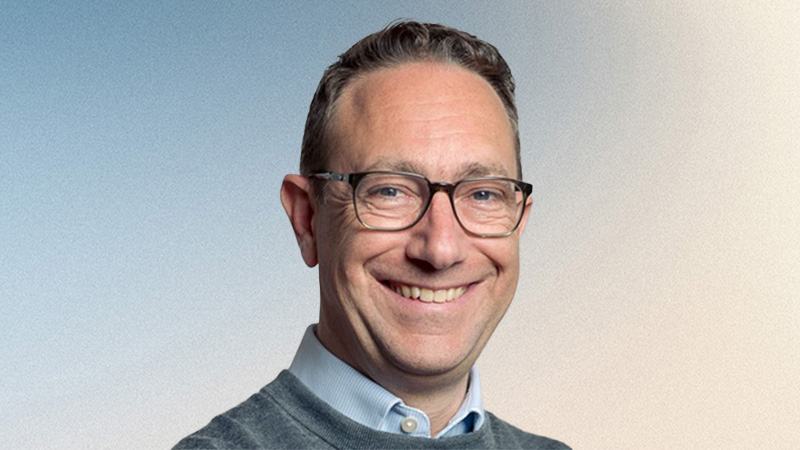As political and economic uncertainty persists in the UK, retail investors continue to flock to the perceived safety of fixed-income funds and are shying away from equities.
According to Investment Association data in July, fixed-income funds attracted net retail sales of £2.2bn, making it the highest-selling asset class among investors for the fifth month in a row.
Conversely, £1.7bn was pulled from equity funds, with UK-invested funds taking the brunt of investor nervousness, suffering outflows of £1.2bn.
With investor sentiment between these two asset classes seemingly poles apart, how are fund buyers approaching their allocation to fixed-income funds?
Riding the bull
Adrian Lowcock, head of personal investing at Willis Owen, notes bond performance so far in 2019 has been among the best in two decades, particularly that of government bonds. Investment-grade bonds in the US and UK have also delivered stellar performance.
“With interest rate cuts back on the agenda, prices rose strongly over the summer, before surrendering some of their gains in September,” he says. “The bull market in the asset class has now lasted for 35 years. This has left yields very low, and quantitative easing programmes have magnified the trend. At the end of August, around a third of government bonds worldwide had a negative yield, guaranteeing a loss if held to maturity.”
However, with the longest-dated bonds, Lowcock says even a small drop in yields can produce large capital gains. For example, the price of a 100-year bond issued by the Austrian government in 2017, at a coupon of 2.1%, had almost doubled by August this year as its yield dropped below 1%.
Even UK 10-year gilts have made low double-digit gains in 2019, as their yield declined from 1.3% at the beginning of the year, to 0.5% by the end of August.
Faced with a slowing economy, the European Central Bank (ECB) recently reduced interest rates further into negative territory, and is to resume its bond-buying programme. While Lowcock says this should underpin low yields for now, with limited ammunition in reserve it may not be enough to kick-start the region.
“ECB president Mario Draghi called on eurozone governments to cut taxes and spend more, which would require the issue of more bonds,” he says. “The US has more potential to cut rates, and while Donald Trump is keen for action, Federal Reserve chairman Jay Powell appears less enthusiastic. His focus is the growth and inflation outlook, which for the US remains stable.
“Interest rates do seem set to remain lower for longer. Other supportive factors are ageing populations and high debt levels in developed economies.
“This is particularly evident in Japan where a falling working population has constrained growth and inflation, justifying low interest rates.”
While Lowcock cautions that government bonds look expensive in traditional valuation terms, he notes that although many experts have been calling the top of the market for a number of years, the bull market has continued.
He adds: “A reversal of recent monetary easing will probably require an improvement in economic data, a US-China trade deal, a resolution to Brexit and further fiscal stimulus. When interest rates do eventually rise, pressure on bond prices could be significant.
“Investors should also bear in mind inflation and defaults. Inflation can reduce the real returns of fixed income, while defaults can occur if companies face a squeeze on profits and cashflows.
“To put things into context, the UK 10-year gilt yield is currently only about 0.5% compared with the yield on the FTSE 100 of 4.5% (FTSE Russell factsheet, 31 Sep ’19). However, active bond management strategies have the potential to generate positive total returns, even from low or negative yielding debt instruments.”
Equity versus non-equity
According to Chris Metcalfe, investment and managing director at Iboss, the current market can be divided simply between equity and non-equity. Yield and the machinations of the world’s central banks are driving risk asset valuations, led by the Federal Reserve, he says.
At present Iboss’ exposure to fixed income across its risk-rated investments ranges between 21% at the high-risk end through to 32% at the lowest level. This, says Metcalfe, is supplemented by 4% held in property and infrastructure across the range.
“The continuous search for yield often means securitised property and infrastructure funds move in tandem with higher-yielding bond sectors,” he says.
“Within our Oeic range we took our gold holding up to 4% earlier this year as global yields fall. Similar to our thinking on property, we see this gold positioning as complementary to our bond holdings.
“Alongside gold, one of our core holdings since the beginning of Q4 2018 has been a US government bond index fund, which is hedged back into sterling. This is because even if interest rates stop falling, which we doubt, we don’t see how they can appreciably rise without crashing the global economy.
“We saw in Q4 last year what the world looked like when the Fed tried to ‘normalise’, and it was financial carnage that only stopped with the Fed pivot.”
Among the numerous risks to any fixed-income position, Metcalfe says today’s macroeconomic and political backdrop has created a new one, namely modern monetary theory. This has moved from the realms of crazy left-field heterodox to a more mainstream discussion point.
“We would include the many versions of helicopter money, debt write-off and practically any other versions of avoiding the perceived economic reality,” he says. “We are not really concerned with the labelling or definitions but any of these wacky ideas could have a profound effect on debt pricing.
“As a result, we currently have our shortest duration and highest credit quality fixed-income portfolio since inception. In our view, because of the credence given to some extremely dangerous monetary and fiscal ideas, it seems our only sensible approach.”
All in the mix
Ryan Hughes, head of active portfolios at AJ Bell Investments, says his fixed-income exposure is currently spread across a number of different areas of the bond market.
“Our fixed-income exposure is built using our own asset allocation, and doesn’t use strategic bond funds, the mainstay of many adviser portfolios,” he says.
Using AJ Bell’s medium risk portfolio as an example, he says this includes short-duration UK gilts, UK and US investment-grade corporate bonds, high-yield bonds and emerging market debt (EMD).
“We currently have 3% in short UK gilts,” Hughes explains. “This is effectively a step out of cash, and is implemented using the Lyxor 0-5-year ETF to keep costs as low as possible.
“We then have 14% in UK investment- grade corporate bonds, which is focused on high-quality bonds and is currently implemented via two funds, the Twentyfour Corporate Bond Fund and the Fidelity Moneybuilder Income Fund.
“Our 4% weighting to US investment-grade corporate bonds, meanwhile, provides exposure to a yield pick-up in the US, but importantly we hedge this back into sterling. This is done via the iShares USD Corporate Bond ETF, again to keep costs low.”
Turning to high-yield bonds, in which Hughes holds 8% of the medium-risk portfolio, he prefers quality exposure, given the risks in the asset class. This comes from the Baillie Gifford High Yield Bond and Royal London Global Short Duration High Yield funds.
Finally, he has 5% invested in EMD, which he notes is an area that offers some “attractive pickup over developed markets”. This weighting is all held in the M&G Emerging Markets Bond Fund, which provides exposure to both hard and local currency bonds.
“This mix of funds and assets gives us a duration slightly shorter than the broader bond market and an average credit quality of BBB, which feels appropriate given the risks that exist in the market.”











